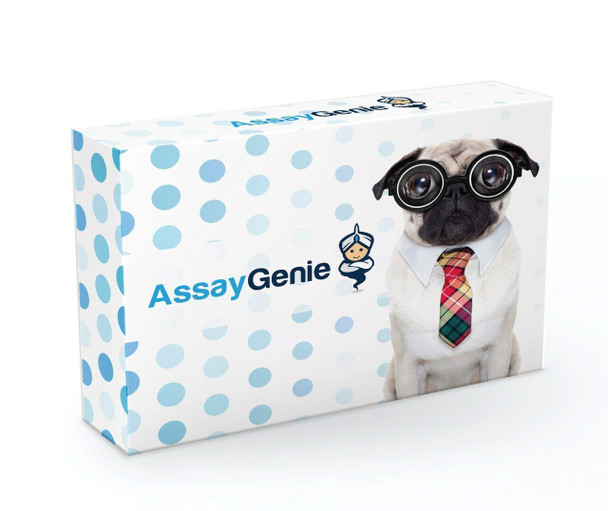Description
Anti-GLI2 Antibody (CAB16863)
The GLI2 Polyclonal Antibody (CAB16863) is a valuable tool for researchers studying the GLI2 protein, a transcription factor involved in the Hedgehog signaling pathway. This antibody, generated in rabbits, is highly specific for human samples and has been validated for use in Western blot applications. By targeting the GLI2 protein, this antibody allows for the precise detection and analysis of GLI2 in various cell types, making it ideal for studies in developmental biology, cancer research, and stem cell biology.
GLI2 is a key player in the Hedgehog signaling pathway, which plays critical roles in embryonic development, tissue regeneration, and tumorigenesis. Dysregulation of GLI2 has been implicated in a variety of diseases, including basal cell carcinoma, medulloblastoma, and pancreatic cancer. Understanding the function and regulation of GLI2 is essential for developing targeted therapies for these diseases and uncovering new insights into developmental and cancer biology.
| Antibody Name: | Anti-GLI2 Antibody |
| Antibody SKU: | CAB16863 |
| Antibody Size: | 20uL, 50 uL |
| Application: | WB |
| Reactivity: | Human, Mouse |
| Host Species: | Rabbit |
| Immunogen: | A synthetic peptide corresponding to a sequence within amino acids 50-150 of human GLI2 (NP_005261.2). |
| Application: | WB |
| Recommended Dilution: | WB 1:500 - 1:2000 |
| Reactivity: | Human, Mouse |
| Positive Samples: |
| Immunogen: | A synthetic peptide corresponding to a sequence within amino acids 50-150 of human GLI2 (NP_005261.2). |
| Purification Method: | Affinity purification |
| Storage Buffer: | Store at -20°C. Avoid freeze / thaw cycles. Buffer: PBS with 0.02% sodium azide, 50% glycerol, pH7.3. |
| Isotype: | IgG |
| Sequence: | VPQH LLPP FHAP LPID MRHQ EGRY HYEP HSVH GVHG PPAL SGSP VISD ISLI RLSP HPAG PGES PFNA PHPY VNPH MEHY LRSV HSSP TLSM ISAA RGLS P |
| Gene ID: | 2736 |
| Uniprot: | P10070 |
| Cellular Location: | |
| Calculated MW: | 168kDa |
| Observed MW: | Refer to figures |
| Synonyms: | GLI2, CJS, HPE9, PHS2, THP1, THP2, Gli2 |
| Background: | This gene encodes a protein which belongs to the C2H2-type zinc finger protein subclass of the Gli family. Members of this subclass are characterized as transcription factors which bind DNA through zinc finger motifs. These motifs contain conserved H-C links. Gli family zinc finger proteins are mediators of Sonic hedgehog (Shh) signaling and they are implicated as potent oncogenes in the embryonal carcinoma cell. The protein encoded by this gene localizes to the cytoplasm and activates patched Drosophila homolog (PTCH) gene expression. It is also thought to play a role during embryogenesis. The encoded protein is associated with several phenotypes- Greig cephalopolysyndactyly syndrome, Pallister-Hall syndrome, preaxial polydactyly type IV, postaxial polydactyly types A1 and B. |
| UniProt Protein Function: | Functions as transcription regulator in the hedgehog (Hh) pathway (PubMed:18455992). Functions as transcriptional activator (PubMed:9557682, PubMed:19878745, PubMed:24311597). May also function as transcriptional repressor. Requires STK36 for full transcriptional activator activity. Required for normal embryonic development (PubMed:15994174, PubMed:20685856). |
| NCBI Summary: | This gene encodes a protein which belongs to the C2H2-type zinc finger protein subclass of the Gli family. Members of this subclass are characterized as transcription factors which bind DNA through zinc finger motifs. These motifs contain conserved H-C links. Gli family zinc finger proteins are mediators of Sonic hedgehog (Shh) signaling and they are implicated as potent oncogenes in the embryonal carcinoma cell. The protein encoded by this gene localizes to the cytoplasm and activates patched Drosophila homolog (PTCH) gene expression. It is also thought to play a role during embryogenesis. The encoded protein is associated with several phenotypes- Greig cephalopolysyndactyly syndrome, Pallister-Hall syndrome, preaxial polydactyly type IV, postaxial polydactyly types A1 and B. [provided by RefSeq, Jul 2008] |
| UniProt Code: | P10070 |
| NCBI GenInfo Identifier: | 215274258 |
| NCBI Gene ID: | 2736 |
| NCBI Accession: | P10070.4 |
| UniProt Related Accession: | P10070 |
| Molecular Weight: | 168kDa |
| NCBI Full Name: | Zinc finger protein GLI2 |
| NCBI Synonym Full Names: | GLI family zinc finger 2 |
| NCBI Official Symbol: | GLI2 |
| NCBI Official Synonym Symbols: | CJS; HPE9; PHS2; THP1; THP2 |
| NCBI Protein Information: | zinc finger protein GLI2 |
| UniProt Protein Name: | Zinc finger protein GLI2 |
| UniProt Synonym Protein Names: | GLI family zinc finger protein 2; Tax helper protein |
| Protein Family: | Zinc finger protein |
| UniProt Gene Name: | GLI2 |
| UniProt Entry Name: | GLI2_HUMAN |








